

Max Davies
How Audi, BMW, Honda, Mercedes-Benz, and Suzuki started out in Australia, and where they are now
14 Hours Ago
Mitsubishi is back in the van market with a rebadged Renault Trafic. We can't just do a find and replace with a Trafic review, though, as this clone lacks many of the features found in the Renault.
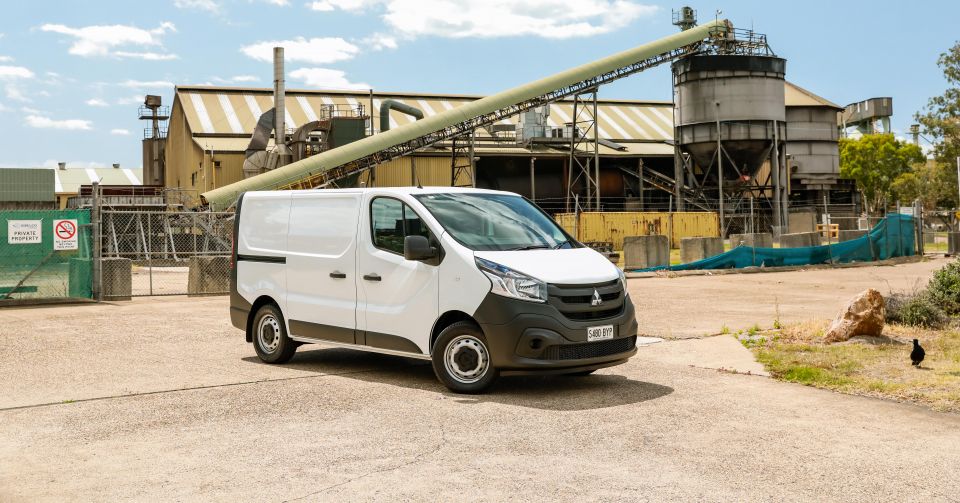


News Editor

News Editor


News Editor

News Editor
Where expert car reviews meet expert car buying – CarExpert gives you trusted advice, personalised service and real savings on your next new car.
The Mitsubishi Express delivery van has returned, but it’s quite a different beast compared to the one that was retired back in 2013.
It’s a rebadged version of the popular Renault Trafic – a result of Mitsubishi’s involvement in the Renault-Nissan ‘Alliance’. Interestingly, the project was signed-off in large part for Australia.
On the plus side, if you’re comparing it to the last van to wear the Express nameplate, it’s a quantum leap so large even Scott Bakula couldn’t make it.

On the other hand, in that time-honoured tradition of badge-engineered vehicles, the Express misses out on some features that can be found in its Renault twin. There never was a Toyota Lexcen SS or V8 Nissan Ute…
It’s quite clear that this Mitsubishi is a pared-back workhorse with a particular focus on fleet buyers. And as such it can feel like a throwback compared to some more uber-modern vans like the Toyota HiAce and Ford Transit Custom.
Let us explain.
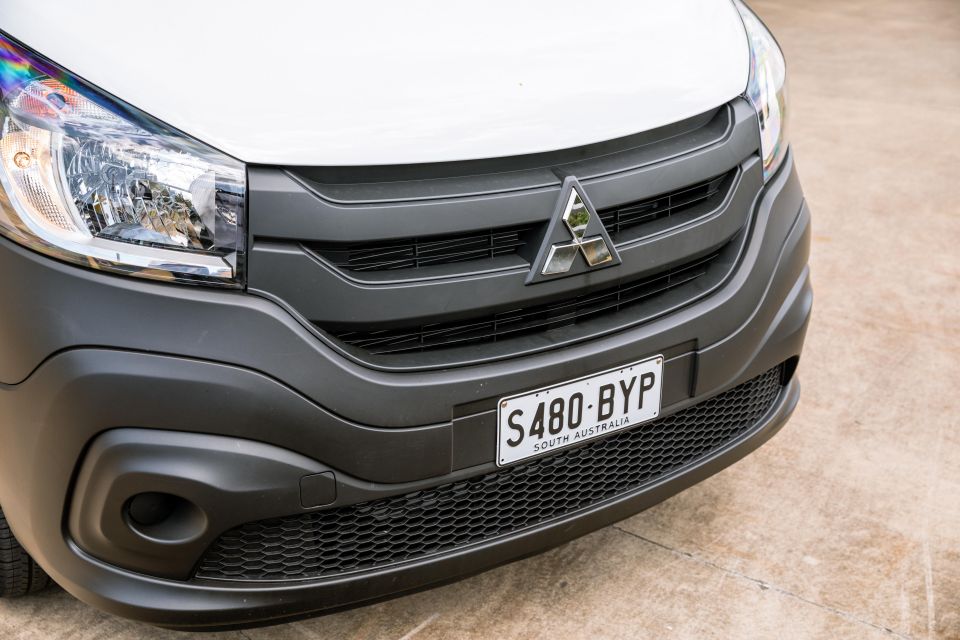
The Express range opens at $38,490 before on-road costs for the short-wheelbase 1.6-litre manual GLX, as featured here. Opting for the long-wheelbase variant adds $2000.
The more powerful 2.0-litre turbo-diesel costs $42,490 and $44,490 before on-road costs in short- and long-wheelbase forms, respectively.
You can get a Renault Trafic for cheaper. The entry-level model in that range costs $36,990 before on-road costs but features a less powerful 1.6-litre turbo-diesel. To get the twin-turbocharged 1.6-litre turbo-diesel of our Express tester, you’re looking at $40,490 before on-roads for a short-wheelbase. Add another $2000 for the long-wheelbase.
The Trafic isn’t the only rival van. There’s a sizeable number of competitors, from the Volkswagen Transporter (starting at $38,990 before on-roads), Mercedes-Benz Vito ($39,080), Hyundai iLoad ($39,680), Ford Transit Custom ($42,390), plus the LDV G10 ($31,569 drive-away) and V80 ($32,621).
Toyota’s top-selling HiAce starts at $39,740 but doesn’t offer a short-wheelbase version. To get into a diesel HiAce, the cost of entry rises to $42,140.
On the surface, then, the Express seems competitively priced. But let’s take a look at that spec sheet.

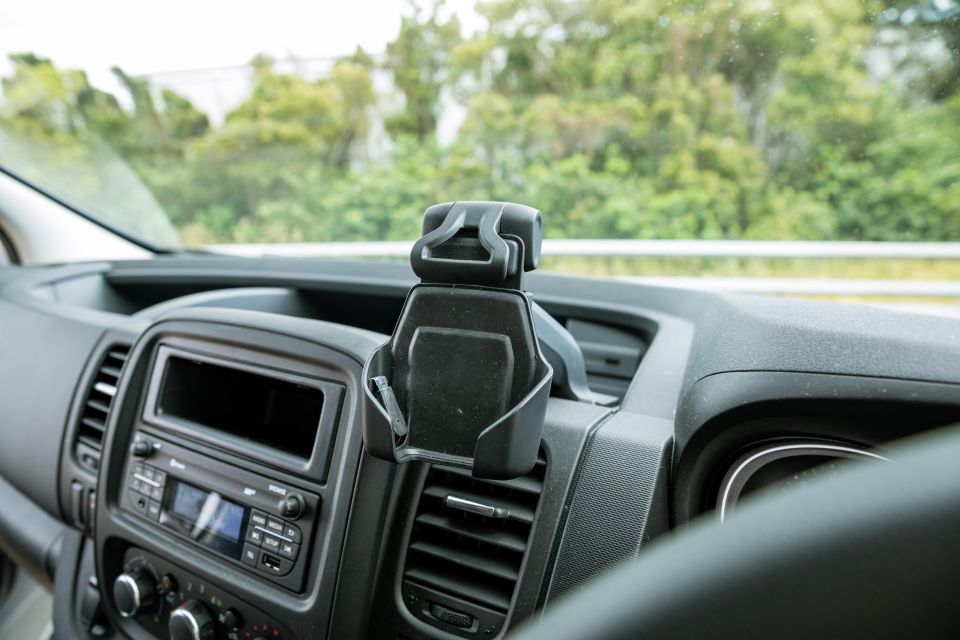
Buy your new car without the stress. It's fast, simple and completely free.

Great service from Travis and team, second time I have used this business would not hesitate to recommend them to anyone
Craig C.
Purchased a Ford Ranger in Sunshine Coast, QLD
CarExpert helped Craig save thousands on his Ford Ranger, now let us save you on your next new car.
Find a dealIn the Express GLX 1.6, you get the basics: a three-seat front bench, cruise control, a couple of USB ports, power windows, automatic stop/start, and DAB digital radio.
You have to step up to the automatic to get automatic headlights or rain-sensing wipers. More egregiously, automatic models are the only ones to get a reversing camera, even if it’s just a small mirror-mounted one. While many van drivers have been behind the wheel of one for years and are probably well used to the huge blind spots they have, this is still a strange oversight.
More disappointingly, the Express lacks anything in the way of active safety technology. While some rivals like the Hyundai iLoad and the Chinese LDV vans are also lacking this, every HiAce or Transit Custom comes standard with autonomous emergency braking, blind-spot monitoring, rear cross-traffic alert and lane-keeping assist.
Mitsubishi offers a wide range of accessories for the Express range, including front parking sensors, front fog lights, A-pillar grab handles and the mirror-mounted reversing camera. Frankly, these should be standard.
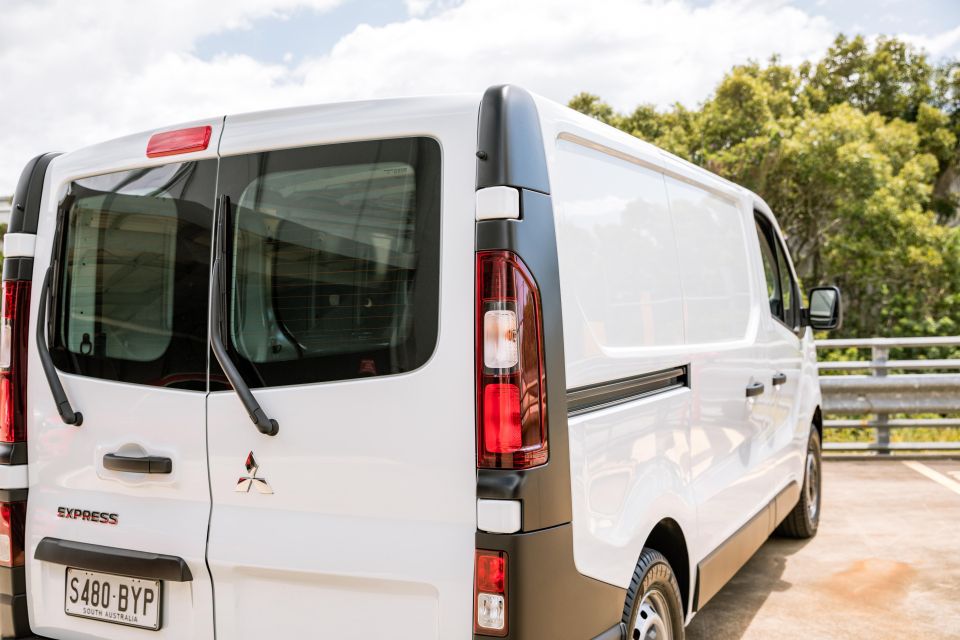
The last Express sold here trudged off the market in 2013, even though it dated back to 1986. It somehow managed to outlive the vehicle introduced to replace it, which was based on the fourth-generation Delica/L400. Eventually, Mitsubishi realised how embarrassing it was to have a car with a one-star ANCAP rating in its range and pulled the plug on it.
That car didn’t even have an airbag, so already the 2020 Express is leagues ahead. Nevertheless, the Trafic upon which it’s based has only a three-star Euro NCAP rating dating back to 2015, with scores of 52 per cent for adult occupant protection, 53 per cent for pedestrian protection and 57 per cent for safety assist.
Given there have been no major updates to the van’s structure since then and it still lacks active safety technology like autonomous emergency braking, the Express definitely wouldn’t be able to net a five-star rating from ANCAP today. Still, it would do a lot better than the old Express.
Standard safety technology is limited to dual front and curtain airbags, plus a driver’s thorax airbag, electronic brake force distribution, anti-lock brakes, and electronic stability control.
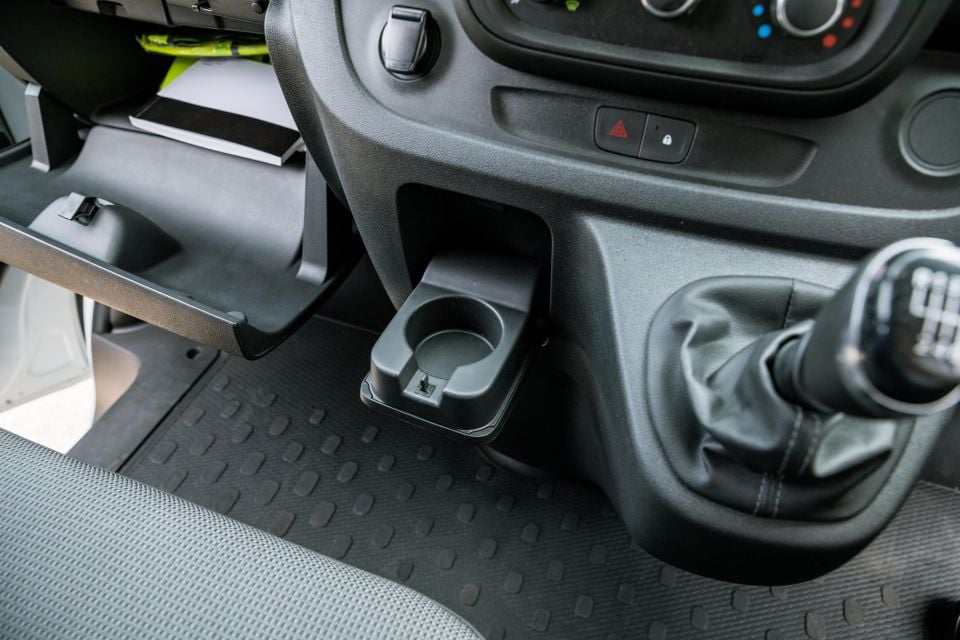
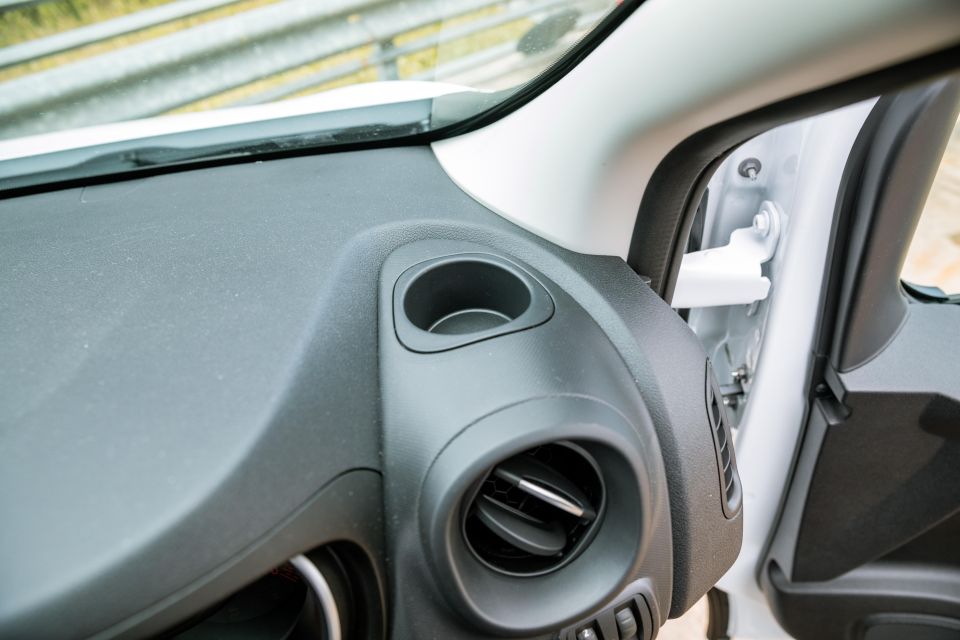
You can tell the Express is European by a few details. There’s the bonnet release, located on the passenger side of the cabin, or the indicators which are on the left-hand side of the steering wheel. Renault’s trademark volume control “pod” to the right-hand side of the steering wheel takes some adjusting but eventually feels intuitive.
There’s a single cupholder and it’s both shallow and has a small circumference, which means a standard shaker cup won’t fit. I still vividly remember the day I took a corner too fast in a TR Astra that had a similar “European-style” cupholder and ended up with hot coffee splashed all over the cloth upholstery, so driver beware.
There are vague, cupholder-shaped indentations on both sides of the dash but I’d hesitate to ever rest a beverage in them. There are bottle holders in each door, though.
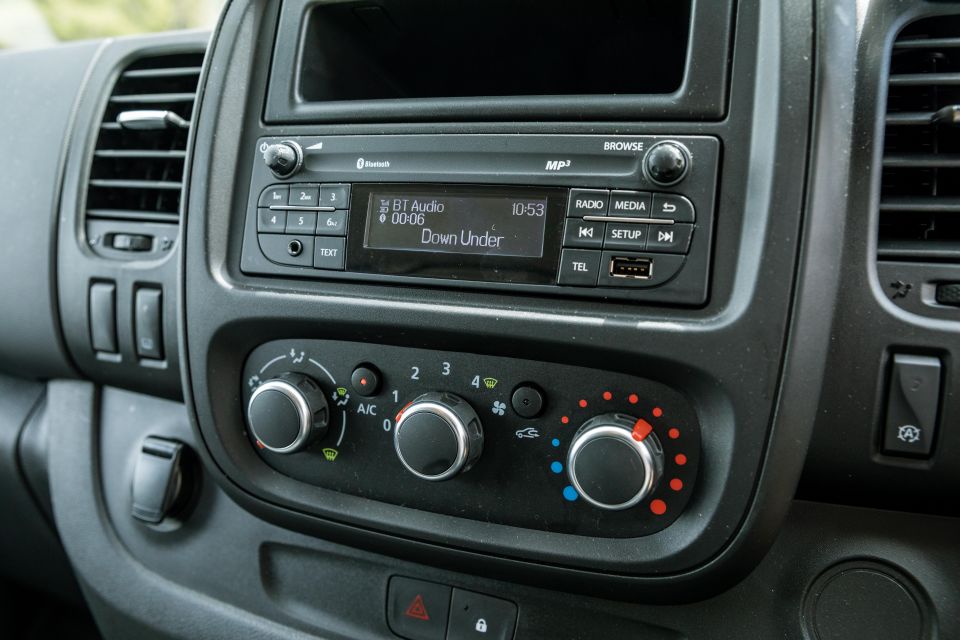
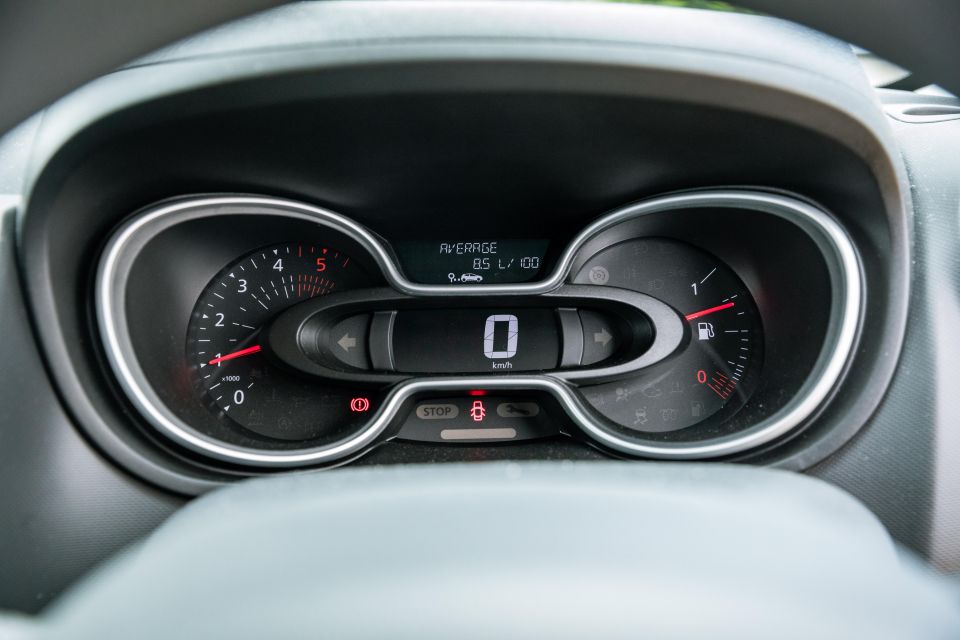
Perhaps the most noteworthy thing about the interior is what’s missing: a touchscreen. Instead, there’s a small head unit with a little storage shelf above it. The digital speedometer also looks straight out of the 1980s, as does the tiny trip computer read out directly above it.
The cabin’s not completely last century. There is Bluetooth phone and audio streaming, after all, and once you’re connected it works well enough. Peculiarly, the car doesn’t tell you what the name of the Express’ Bluetooth is which could be a problem if you’re trying to pair in a busy street or car park. It’s MYCAR, by the way.
The head unit is super fiddly, with tiny buttons. There are no answer/hang up buttons for the phone on the steering wheel as you’ll find in many cars. Instead, if somebody calls you need to either press a tiny button on the head unit labelled TEL or press a button on a pod behind the steering wheel.
The driver’s seat is comfortable enough, with both adjustable height and lumbar. There’s also a fold-down arm rest, while the steering column tilts and telescopes.
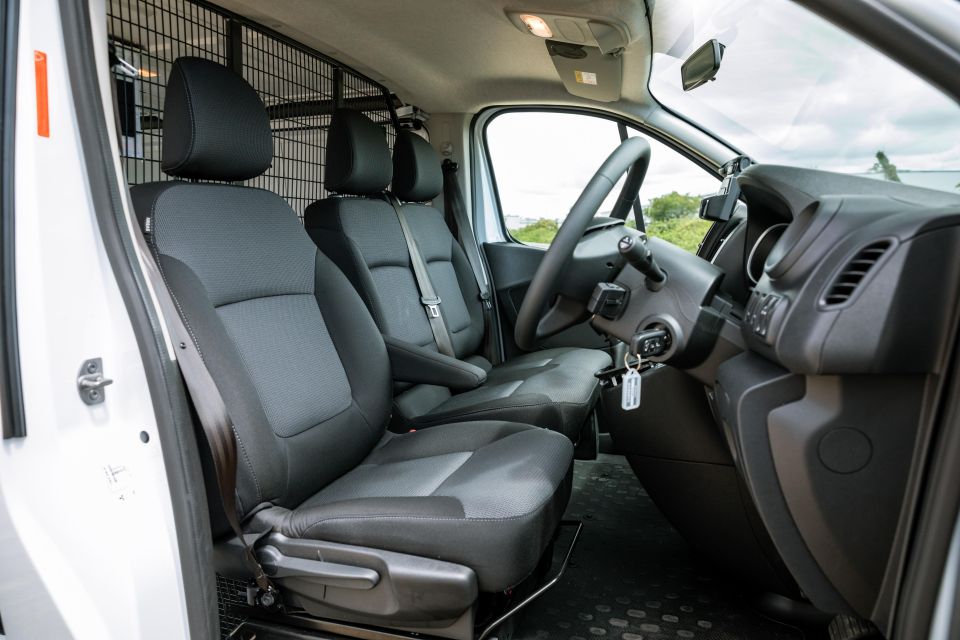
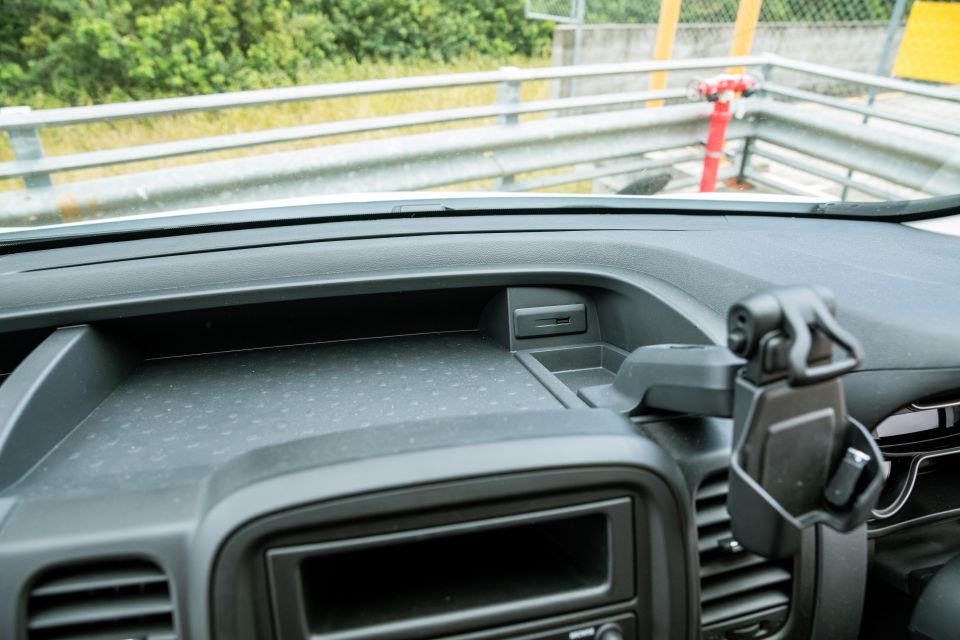
Passengers don’t have any adjustability for their seat and the middle seat is best saved for short trips, unless you’re trying to play matchmaker with your two passengers.
The dash top is scooped out, forming one big, divided tray. Glovebox aside, however, there aren’t any compartments where you can hide valuables away from prying eyes.
Mitsubishi makes an A-pillar grab handle optional for some reason, as if to slow down your ascent into the cabin. There is a helpful step in the side of the cabin, though, which makes ingress and egress easier.
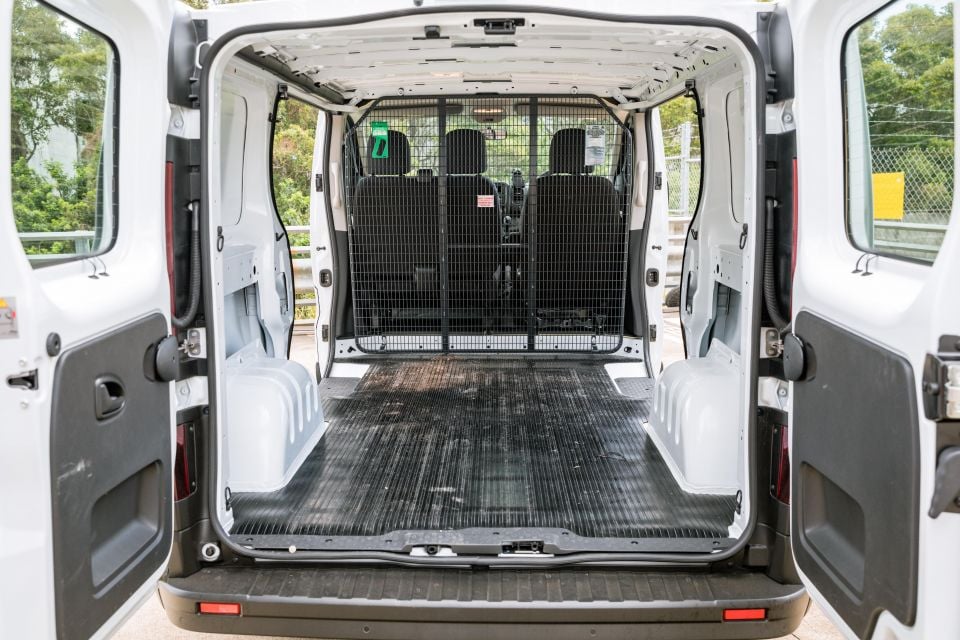
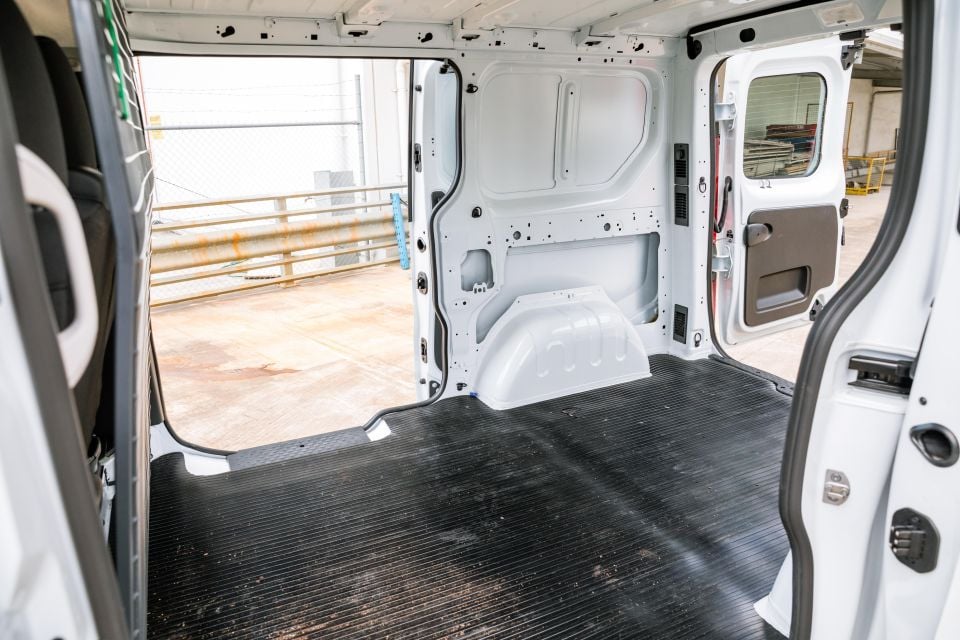
Visibility out the front and sides of the Express is excellent with a large greenhouse. It’s just a pity Mitsubishi hinders rear visibility by not fitting a reversing camera in manual models and not offering blind-spot monitoring in any model.
Head around back and you’ve got three different ways to get into the load area, with sliding doors on each side and dual barn doors at the rear. Those doors open 90 degrees, too.
A single dome light towards the bulkhead illuminates the cargo bay, though Mitsubishi offers LED lighting in its accessory catalogue alongside the cargo barrier on our test vehicle.
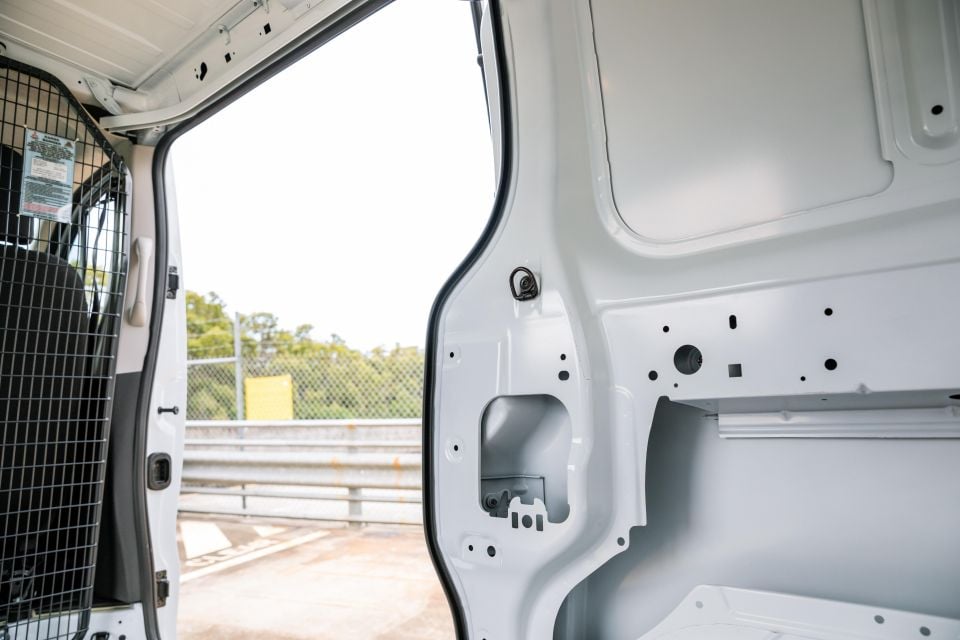

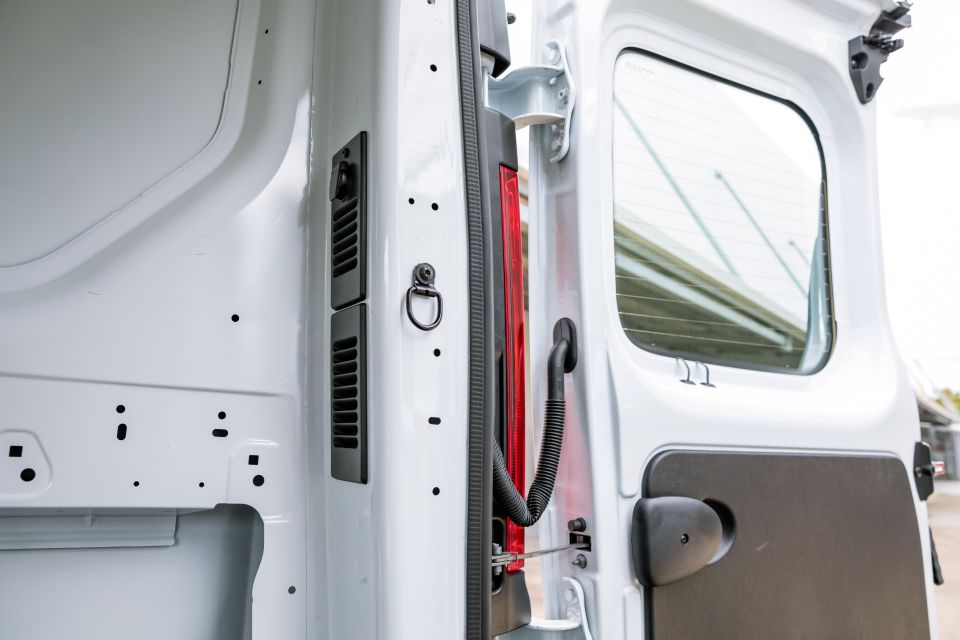
To size up the Express’ cargo-carrying capabilities, it’s best to compare it with its key manual, diesel-powered rivals.
| Mitsubishi Express 1.6 SWB | Ford Transit Custom 340S SWB | Hyundai iLoad | Toyota HiAce LWB | Volkswagen Transporter TDI250 SWB | |
|---|---|---|---|---|---|
| Gross Vehicle Mass | 2960kg | 3400kg | 3160kg | 3300kg | 2800kg |
| Gross Combined Mass | 4960kg | 5365kg | 5160kg | 5200kg | 5000kg |
| Payload | 1150kg | 1387kg | 1113kg | 1075kg | 951kg |
| Cargo area width | 1662mm | 1775mm | 1620mm | 1760mm | 1700mm |
| Cargo area width – between arches | 1268mm | 1392mm | 1272mm | 1268mm | 1244mm |
| Cargo area length | 2537mm | 2554mm | 2375mm | 2530mm | 2572mm |
| Cargo area height | 1387mm | 1406mm | 1340mm | 1340mm | 1410mm |
| Maximum braked towing capacity | 2000kg | 2500kg | 2000kg | 1900kg | 2500kg |
As you can see, the Express is in the hunt but some rivals – the Ford Transit Custom, in particular – offer more hauling capability.
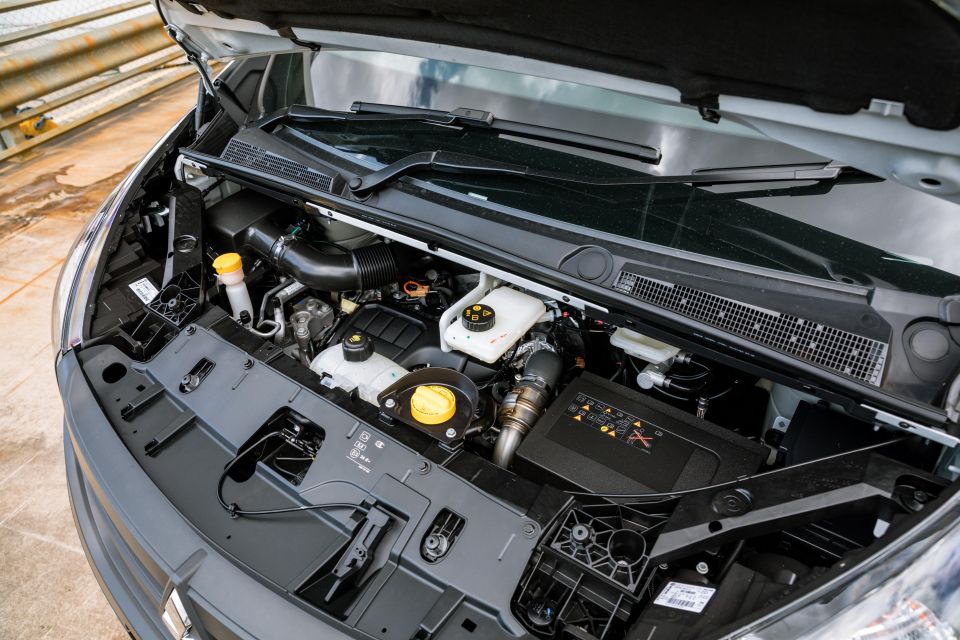
All manual Express models use a 1.6-litre four-cylinder twin-turbo diesel with 103kW of power and 340Nm of torque, sent to the front wheels through a six-speed manual transmission.
If you want an automatic, you’ll be upgraded to a 2.0-litre four-cylinder turbo-diesel with 125kW of power and 380Nm of torque. The automatic is a six-speed dual-clutch unit.
Both short- and long-wheelbase models are available with either powertrain.
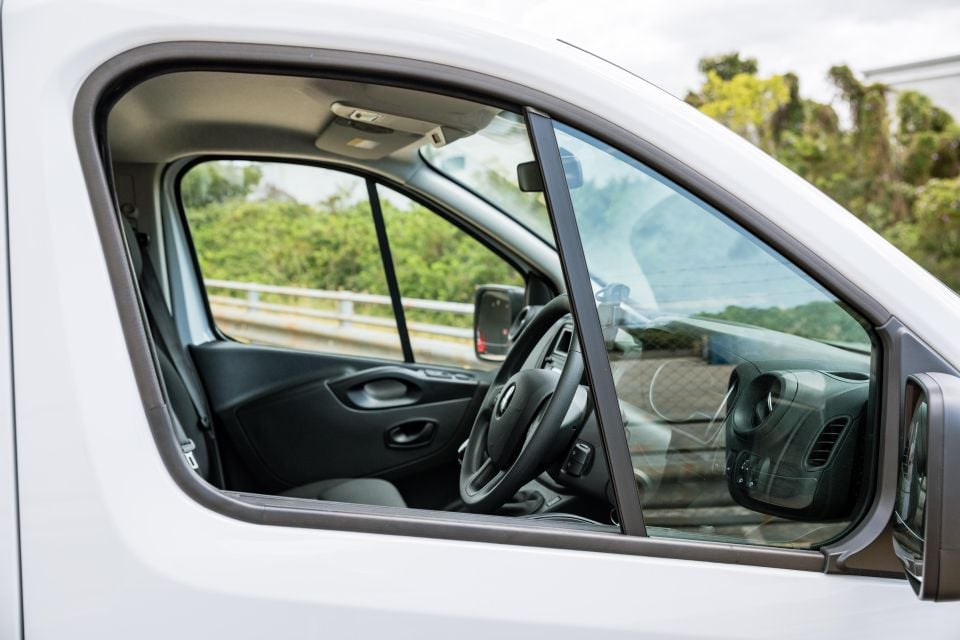
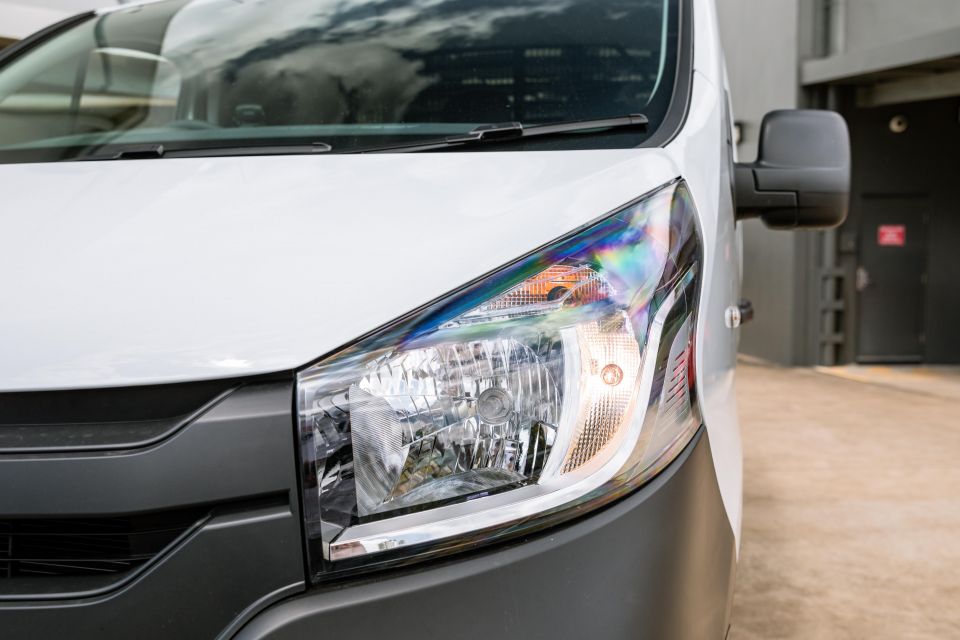
The Express drives quite well. Though it looks oddly large for a van in this segment, its 11.8-metre turning circle is about par for the class and the Express rarely feels too cumbersome.
The shifter action isn’t overly balky and the clutch engagement is good, though the shifter boot would come loose every time we put it in reverse and expose the workings underneath. We’d clip it back in and it would pop right back out, though eventually we managed to secure it.

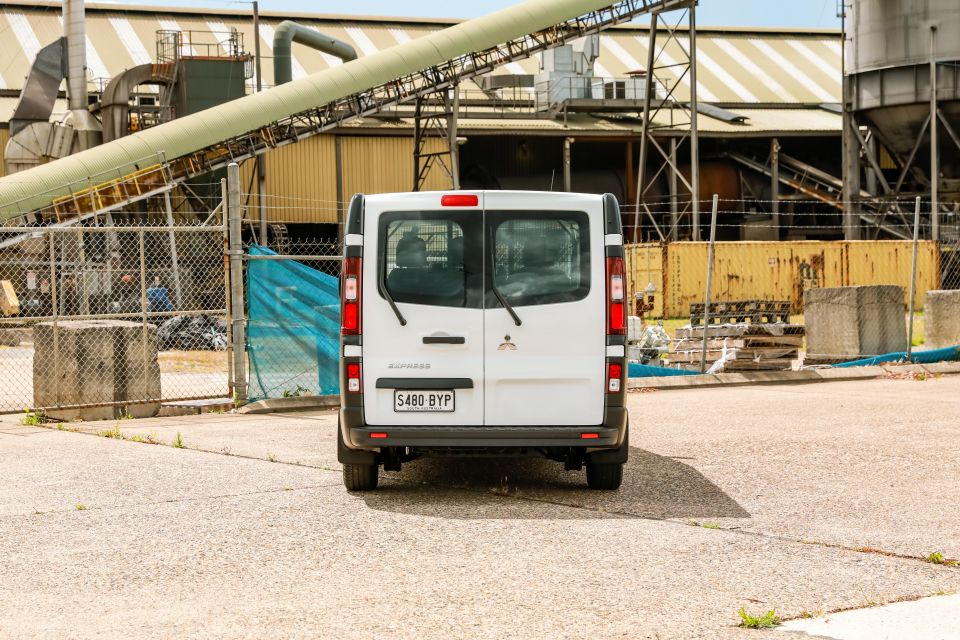
A pictogram in the gauge cluster will tell you when you should upshift or downshift, while a light underneath the speedometer will change colours based on how efficiently you’re driving. The tech isn’t new – “eco” lights have been around since at least the 1970s – but it’s fun to see how long you can keep it green. The worst we ever saw it go to was orange, by the way.
The cabin is surprisingly well insulated from the sound of the diesel engine, which lacks the clatter that’s often found in light commercial vehicles. And unladen, that little twin-turbo diesel has more than enough punch to keep up with traffic. You can even light up the front tyres if you stomp it at the lights.
It rides fairly well for a van and doesn’t clomp over bumps, while noise levels – even at highway speeds – are low. Even as your speed rises, the Express feels nice and planted and doesn’t get blown around by crosswinds.
If you’re used to driving vans like the Transit Custom, you’ll really feel the absence of both a reversing camera and blind-spot monitoring. No vehicle has bigger blind spots than a cargo van and you’ll be watching those large wing mirrors like a hawk when you’re making your manoeuvres.
If you’ve only ever driven manual vans, the Express will suit you just fine. Still, we’ve driven the automatic and it’s quite a good transmission. That opting for it also scores you some extra features goes a long way towards justifying the extra money, though its bigger engine is naturally thirstier.
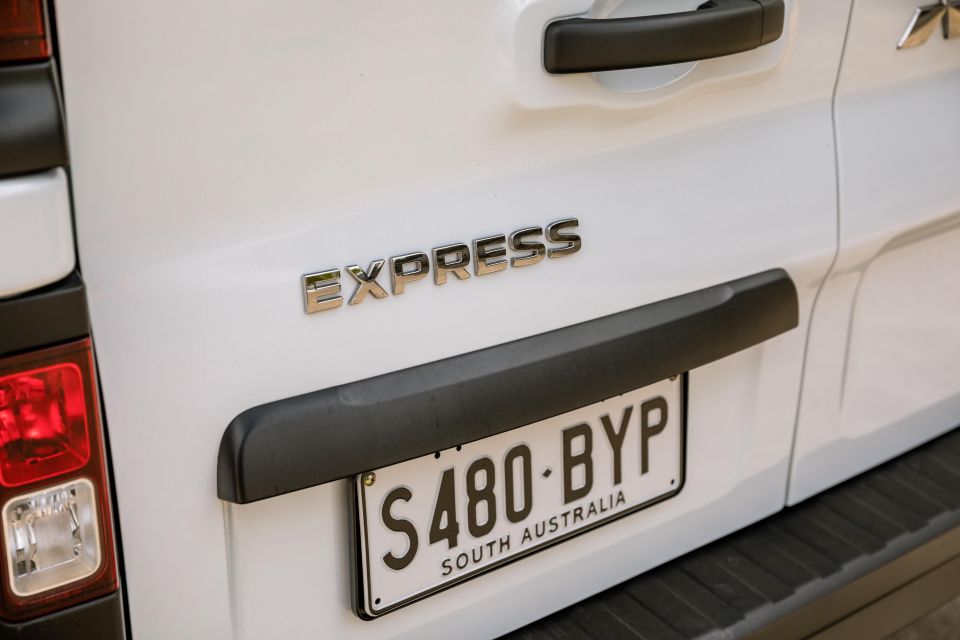
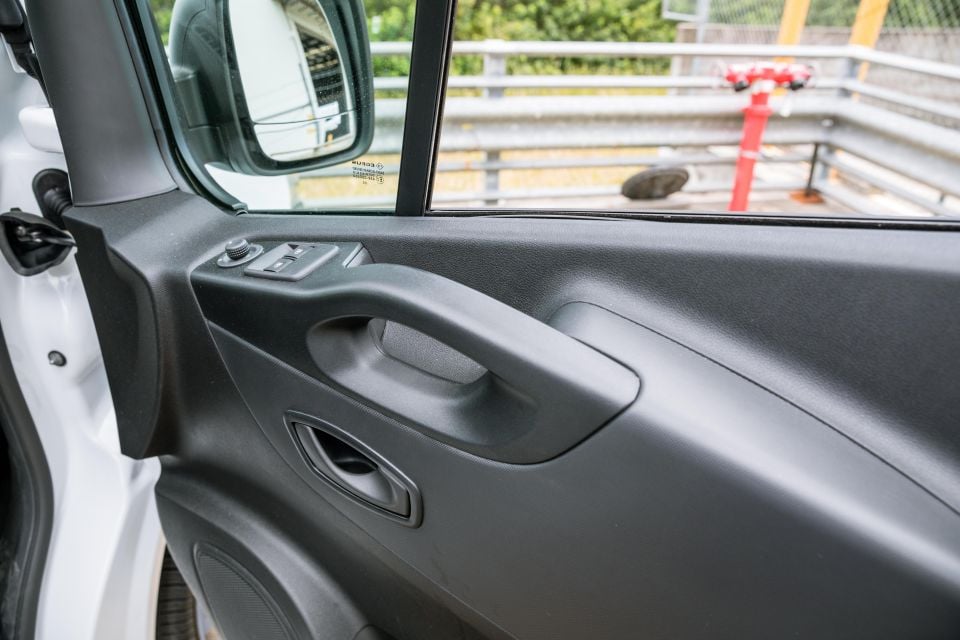
Where expert car reviews meet expert car buying – CarExpert gives you trusted advice, personalised service and real savings on your next new car.
In a mix of city and highway driving albeit in quite heavy traffic, we recorded an average fuel consumption of 8.0L/100km. Mitsubishi claims a combined fuel economy of 6.2L/100km.
Mitsubishi offers ten years of capped-price servicing in addition to its new ten-year, 200,000km warranty, which is reduced to five years and 100,000km if you don’t service with Mitsubishi. Services cost $199 in odd years and between $599 and $899 in even years.
Intervals are shorter than its Renault cousin – 12 months or 15,000km, instead of 12 months or 30,000km for the Trafic. That’s still longer than the top-selling HiAce, which requires you to service it every six months or 10,000km.
The Mitsubishi benefits from a wider dealership network than the Renault plus cheaper service prices. Renault offers five years of capped-price servicing but each service costs $599, except for the one at the four-year/120,000km mark which costs $1299.
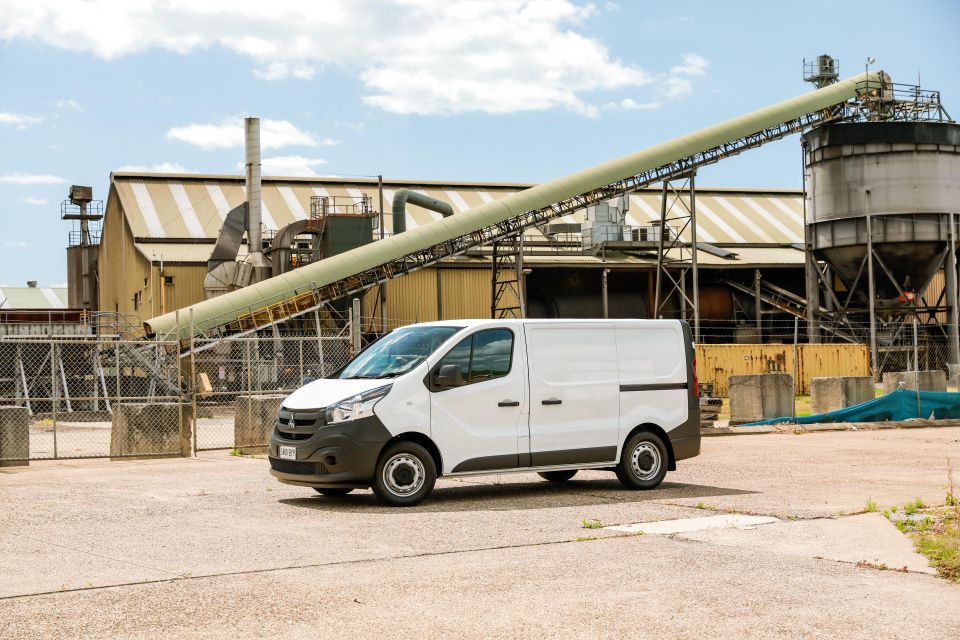
If you’re a fleet purchaser looking for a great deal on a mid-sized van, an Express is going to look mighty tempting. It offers a stronger reputation than Chinese upstart LDV, a superior dealership network to Renault, and a lower price than a diesel-powered Ford Transit Custom or Toyota HiAce.
If you’re a fleet purchaser who’s more concerned about the safety of his or her personnel than getting the best possible deal, however, the Express falls short of rivals like the HiAce and Transit Custom. Those vans may be pricier but they offer five-star ANCAP ratings and a whole suite of active safety technology.
That the manual Express lacks even a reversing camera as standard (and at best, only offers a mirror-mounted one) is a disappointing omission for a van in 2020.
The Express drives well and boasts competitive cargo capacity and, if you’re upgrading from a 2013 Express, it’s a massive improvement. Nevertheless, there are safer, better-equipped vans out there.
Where expert car reviews meet expert car buying – CarExpert gives you trusted advice, personalised service and real savings on your next new car.
William Stopford is an automotive journalist with a passion for mainstream cars, automotive history and overseas auto markets.


Max Davies
14 Hours Ago


William Stopford
14 Hours Ago


Derek Fung
15 Hours Ago


Max Davies
22 Hours Ago


William Stopford
2 Days Ago


Ben Zachariah
2 Days Ago